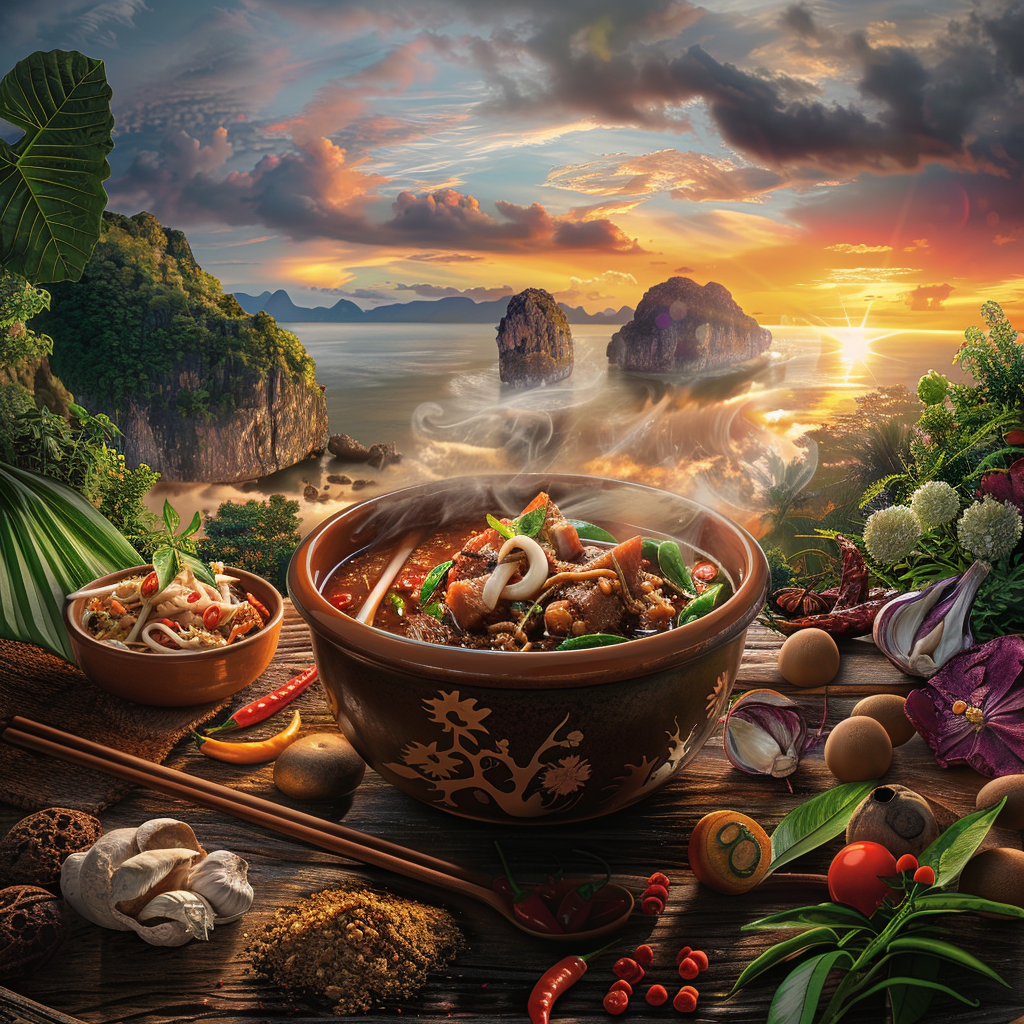Imagine this: The sun is setting on the horizon, painting the skies above Koh Samui and Nakhon Si Thammarat in shades of orange and purple, and there’s a buzz about a topic that’s as hot as the Thai sun itself – Kaeng Tai Pla. Srettha, a connoisseur with a mission, takes to the digital world, stirring a culinary storm with a simple question, “Where can one find the most soul-stirring Kaeng Tai Pla in Koh Samui and Nakhon Si Thammarat?” But that’s not all – as dawn turns to dusk, Srettha is set to dive deep into the pressing issues of water shortages and garbage on the paradisiacal island of Koh Samui, before turning attention to the agricultural marvels and bountiful rubber of Nakhon Si Thammarat.
Why, you ask? It’s a quest, a quest to champion the unsung hero of southern Thai cuisine, all for the prestigious TasteAtlas. “Imagine a world where Kaeng Tai Pla reigns supreme, showcasing the vibrant and diverse flavors of our beloved Thailand #SaveKaengTaiPla,” Srettha muses, aiming to tilt the scales of public opinion back in favor of this spicy delicacy.
The backdrop to this gastronomic adventure is none other than a recent stir caused by TasteAtlas’ audacious ranking, which, to the dismay of culinary patriots, placed Kaeng Tai Pla at the top of its “100 Worst Rated Foods in the World”. The air thick with disbelief, it fell upon none other than the prime minister to weigh in, noting perhaps, “Kaeng Tai Pla’s distinctive zest is an acquired taste, something our friends from other shores might find a tad overwhelming. Yet, what is Kaeng Tai Pla if not a bold celebration of heat?”
In his wisdom, the prime minister reflected on Thailand’s culinary diplomacy, its cuisine a beacon of soft power. Yet, he conceded, not every dish is destined to win the hearts and palates of the international crowd.
Srettha, undeterred, championed the cause of diversity, “Culinary delights, much like beauty, are in the eye (or perhaps the taste-buds) of the beholder. Our rich culinary tapestry boasts of flavors that have danced on the global stage – be it the creamy dream that is Massaman curry, the sweet symphony of Khanom Krok, the fiery embrace of Tom Yum Goong, the iconic swirls of Pad Thai, or the fragrant rebellion of Kaprao. Each a testament to our culinary prowess.”
Indeed, this tale is more than just a hunt for the finest Kaeng Tai Pla; it’s a narrative of pride, of diversity, of a deep-rooted love for Thai cuisine that refuses to be boxed in by rankings or ratings. So, whether it’s under the neon lights of Koh Samui or amidst the verdant swathes of Nakhon Si Thammarat, this journey is a flavorful testament to Thai cuisine’s vibrant heart and soul, one that’s ready to take on the world, one spoonful of Kaeng Tai Pla at a time.


















I’ve always found Kaeng Tai Pla to be an incredibly rich and flavorful dish. Can’t believe it was listed as one of the worst foods. Taste is subjective!
Exactly! How can one dish be judged so harshly on an international scale? It’s about understanding and appreciating the culture behind it.
But isn’t that the point of global rankings? To find a consensus on what is generally considered good or bad, irrespective of cultural biases?
I think appreciation for food deeply roots in cultural understanding. We can’t possibly judge another culture’s cuisine without fully immersing ourselves in it.
Srettha’s quest sounds like a wonderful journey through the essence of Thai cuisine. We need more champions like him/her to fight for culinary diversity!
Absolutely! It’s crucial to have advocates for traditional and perhaps misunderstood dishes. Gastronomy needs its activists too.
While I admire Srettha’s passion, shouldn’t we also focus on the environmental aspects? Koh Samui has issues like water shortages and garbage that need attention too.
You’ve got a point, but maybe culinary tourism can help highlight these issues and bring more support and solutions to them.
That’s an interesting perspective. Culinary advances and environmental sustainability should indeed go hand in hand.
Isn’t championing a dish like Kaeng Tai Pla, known for being excessively spicy and distinct, a bit too niche for global culinary diplomacy?
Not at all! It’s those unique dishes that truly showcase a country’s culinary depth. We should celebrate diversity, not shy away from it.
Kaeng Tai Pla represents Thailand’s bold and fearless approach to flavors. It’s high time the world learned to appreciate it.
Not everyone has a palate for such strong tastes though. There’s beauty in the subtlety of flavors too.
This article beautifully captures the spirit of Thai cuisine and the importance of keeping traditional dishes alive. Let’s spread the word and #SaveKaengTaiPla!
It’s great to see passion for food, but let’s not forget about the environment. We can enjoy and preserve at the same time. #ThinkGreen
Agreed! Culinary tourism should always consider ecological impact. There’s always a way to balance both.